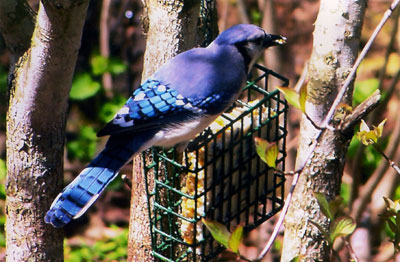All Nonfiction
- Bullying
- Books
- Academic
- Author Interviews
- Celebrity interviews
- College Articles
- College Essays
- Educator of the Year
- Heroes
- Interviews
- Memoir
- Personal Experience
- Sports
- Travel & Culture
All Opinions
- Bullying
- Current Events / Politics
- Discrimination
- Drugs / Alcohol / Smoking
- Entertainment / Celebrities
- Environment
- Love / Relationships
- Movies / Music / TV
- Pop Culture / Trends
- School / College
- Social Issues / Civics
- Spirituality / Religion
- Sports / Hobbies
All Hot Topics
- Bullying
- Community Service
- Environment
- Health
- Letters to the Editor
- Pride & Prejudice
- What Matters
- Back
Summer Guide
- Program Links
- Program Reviews
- Back
College Guide
- College Links
- College Reviews
- College Essays
- College Articles
- Back
The Fatal Path of Bird Migration
Birds
Many things greet you as you walk through a beautiful mountain meadow in the Rocky Mountains of North America. The aspen trees are all different colors, painted red, golden and yellow in bright bursts, and the sky is a cheerful blue arch that hugs you in an embrace. Wildflowers dot here and there, fighting for living space with the wild, untamed grasses. A light and silent breeze caresses your face as you breathe in the refreshing air.
But something is very wrong. In fact, silence is all you hear!
How could it be silent in the mountains? You wonder. With rushing streams, busy bees and songs from the birds---
Wait! Where are the birds?!
Birds are everywhere, and anywhere; but they’re battle for survival just took a deadly turn.
Migration
An important event in many birds lifes' is migration, as you probably and already know.
The simple description of this natural event is when the weather starts getting cold and winter gets showing its frozen breath, most birds fly south to where warmer climates await.
With warmer temperatures and resources like food, birds stay in their southern homes until the weather in their spring homes are relieved of winter and warms up enough for them to return.
But this journey is dangerous and has more to it than you think. In fact, it’s estimated by BirdLife International, a bird conservation group in the United Kingdom, that more than half of bird species that have migrated in the past 40 years have dwindled to dangerously smaller numbers in the Americas, including both North and South.
But the cause of this problem isn’t one you’re going to like. Really, the ones causing these winged deaths are us.
Humans.
Deadly Statistics
According to Wikipedia, survival during migration is harder nowadays than it used to be for birds worldwide because of humans.
To survive, birds need shelter, space, food and water. But habitat loss, light pollution and collisions with man-made buildings are just a few of the problems birds have to face today that have been slowly wiping their species out over the years.
For example, reflective windows. You can find these type of windows in skyscrapers and even your own house! These windows reflect the sky, which tricks birds into thinking it is sky and results in a fatal collision. Ever have a bird run into a window when you are around? That’s reflective windows tricking birds. It’s been estimated that between 95 to 97 million birds get wounded and die every year because of these windows. With everything else that also affects these animals, the death count increases rather quickly.
The bird population is dwindling down to deadly statistics.
Addressing the Problem
First of all, you have probably heard of different animal and bird conservery agencies. But, let’s face the truth. To stop all of the deaths of birds during migration, we are going to have to take action. Together.
From bird baths to bird feeders, everything will help to turn the tide of bird survival. Setting nesting places like bird houses outside, having trees and bushes that provide shelter and simply keeping the house cat inside helps, as it has been said that about two million birds a day are killed by cats. And, if you want to help birds even more, do your research with accurate sources! There are a lot of misconcepts, like having perches are bird houses, that can be deadly in their own way.
Overall, it’s time to save birds who are dying during migration because of humans.
It's time to survive.

Similar Articles
JOIN THE DISCUSSION
This article has 0 comments.

This piece is part of a Silver Award for Girl Scouts.